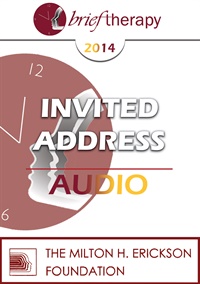
- Average Rating:
- Not yet rated
- Topic Areas:
- Invited Addresses | Brief Therapy | Therapist Development | Training
- Categories:
- Brief Therapy Conference | Brief Therapy Conference 2014
- Faculty:
- Jeffrey Zeig, PhD
- Duration:
- 1:01:08
- Format:
- Audio Only
- Original Program Date:
- Dec 14, 2014
- Short Description:
- Skills and experience, research and theory—each plays a critical role in the development of effective therapy practice. And then there is something else. When we recall the work of such figures as Milton Erickson, Virginia Satir, Carl Rogers and Carl Whitaker, we detect another layer: artistry. Surprisingly, artistry is something that can be taught, or more accurately, expanded or enhanced. Everyone has the capacity.
- Price:
- $15.00 - Base Price
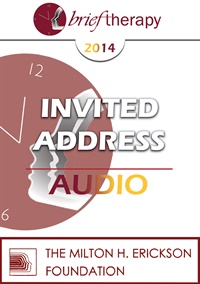
- Average Rating:
- Not yet rated
- Topic Areas:
- Anxiety | Invited Addresses | Brief Therapy | Children and Adolescent Therapy | Homework
- Categories:
- Brief Therapy Conference | Brief Therapy Conference 2014
- Faculty:
- Lynn Lyons, LICSW
- Duration:
- 1:01:55
- Format:
- Audio Only
- Original Program Date:
- Dec 14, 2014
- Short Description:
- When working with anxious kids, your brilliance in the office means nothing if they cannot take what you offer and use it in their world. This presentation will give you eight homework assignments to engage kids from the start, and will spark your strategic creativity as you develop your own homework ideas.
- Price:
- $15.00 - Base Price
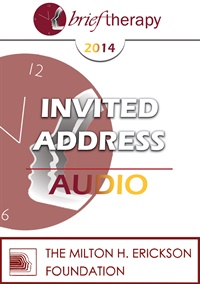
- Average Rating:
- Not yet rated
- Topic Areas:
- Anxiety | Invited Addresses | Brief Therapy | Strategic Therapy
- Categories:
- Brief Therapy Conference | Brief Therapy Conference 2014
- Faculty:
- Reid Wilson, PhD
- Duration:
- 55:39
- Format:
- Audio Only
- Original Program Date:
- Dec 14, 2014
- Short Description:
- The cutting-edge anxiety treatment is now pushing further into the confrontational. You will learn how to help clients purposely to seek out anxiety as their ticket to freedom from crippling fear. Practical methods enable clients to ignore the content of their obsessive worries and to explore the feeling of uncertainty rather than fleeing from it.
- Price:
- $15.00 - Base Price
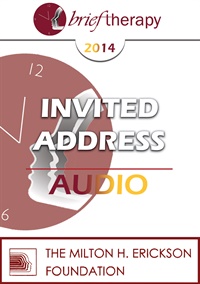
- Average Rating:
- Not yet rated
- Topic Areas:
- Depression | Hypnosis | Invited Addresses | Experiential Therapy | Neuroscience | Brief Therapy
- Categories:
- Brief Therapy Conference | Brief Therapy Conference 2014
- Faculty:
- Michael Yapko, PhD
- Duration:
- 1:08:02
- Format:
- Audio Only
- Original Program Date:
- Dec 14, 2014
- Short Description:
- How a clinician thinks about the nature of depression and answers fundamental questions - such as what causes depression - naturally determine what treatment approach he or she is most likely to take. Regardless of one’s preferred orientation, however, depression experts agree that treatment needs to be multi-dimensional and active. Furthermore, the more we learn about the neuroscience of depression, especially neuroplasticity and neurogenesis, the more important well designed experiential learning processes become in treatment.
- Price:
- $15.00 - Base Price
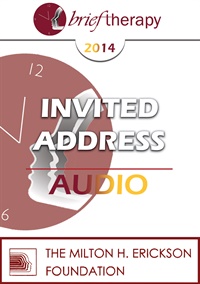
- Average Rating:
- Not yet rated
- Topic Areas:
- Invited Addresses | Brief Therapy | Generative Psychotherapy | Psychotherapy
- Categories:
- Brief Therapy Conference | Brief Therapy Conference 2014
- Faculty:
- Stephen Gilligan, PhD
- Duration:
- 1:02:32
- Format:
- Audio Only
- Original Program Date:
- Dec 14, 2014
- Short Description:
- Generative psychotherapy is an exploration of how individuals can forge positive, therapeutic responses to life challenges. This invited address concentrates on the three core connections that allow clients to do this: (1) Positive intention and goals (What do you most want to create in your life?); (2) Somatic Centering (Where do you feel the deepest resonance in your body?); and (3) Field Resources (What can most deeply support your path of change?).
- Price:
- $15.00 - Base Price
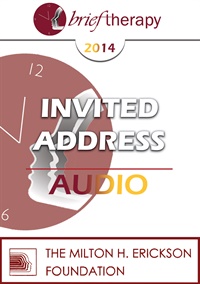
- Average Rating:
- Not yet rated
- Topic Areas:
- Post-Traumatic Stress Disorder (PTSD) | Invited Addresses | Memory | Brief Therapy
- Categories:
- Brief Therapy Conference | Brief Therapy Conference 2014
- Faculty:
- Steve Andreas, MA, NLP
- Duration:
- 59:20
- Format:
- Audio Only
- Original Program Date:
- Dec 14, 2014
- Short Description:
- The phobic core of PTSD is a conditioned response to a terrifying event, easily treated with a process demonstrated in an 8-minute video. Learn the key components that combine to make this method so effective. Other co-occurring problems—grief, rage, anxiety, guilt, shame, drugs, etc.—require different processes for resolution.
- Price:
- $15.00 - Base Price
Tags: Brief Therapy Memory PTSD
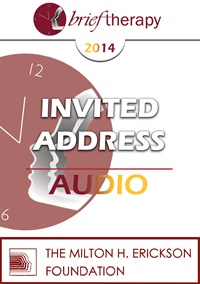
- Average Rating:
- Not yet rated
- Topic Areas:
- Post-Traumatic Stress Disorder (PTSD) | Meditation, Spirituality and Yoga | Invited Addresses | Trauma | Mind-Body
- Categories:
- Brief Therapy Conference | Brief Therapy Conference 2014
- Faculty:
- Bessel van der Kolk, MD
- Duration:
- 1:00:58
- Format:
- Audio Only
- Original Program Date:
- Dec 14, 2014
- Short Description:
- Chronic trauma interferes with self-perception and self-regulation. We will discuss effective approaches.
- Price:
- $15.00 - Base Price
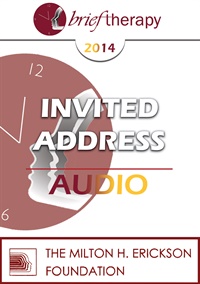
- Average Rating:
- Not yet rated
- Topic Areas:
- Consciousness | Invited Addresses | Neuroscience
- Categories:
- Brief Therapy Conference | Brief Therapy Conference 2014
- Faculty:
- Ernest Rossi, PhD
- Duration:
- 56:51
- Format:
- Audio Only
- Original Program Date:
- Dec 14, 2014
- Short Description:
- Current research in psychosocial genomics is reviewed to underpin a new evolutionary RNA/DNA epigenomic theory of the quantum transformations of consciousness and creative cognition. The alternating classical-to-quantum and quantum-to-classical transitions on all levels from mind to gene are explored for developing an understanding of how the 4-stage creative process operates in an evolving cosmos/consciousness field theory.
- Price:
- $15.00 - Base Price
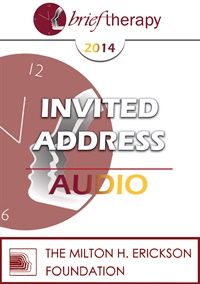
- Average Rating:
- Not yet rated
- Topic Areas:
- Happiness | Invited Addresses | Mindfulness | Brief Therapy | Buddhism
- Categories:
- Brief Therapy Conference | Brief Therapy Conference 2014
- Faculty:
- Ronald Siegel, PsyD
- Duration:
- 1:00:54
- Format:
- Audio Only
- Original Program Date:
- Dec 14, 2014
- Short Description:
- Everyone wants to be happy. While clinicians and researchers traditionally focused on helping troubled people feel less distressed—moving from -5 to 0 on the happiness scale—more recently they’ve branched out to investigate what actually leads to enhanced well-being. Some research findings point in surprising new directions, while others echo advice heard from wise elders and religious teachers across cultures and centuries.
- Price:
- $15.00 - Base Price
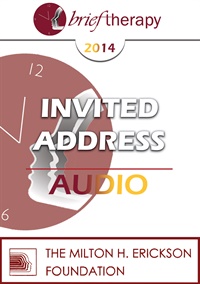
- Average Rating:
- Not yet rated
- Topic Areas:
- Invited Addresses | Brief Therapy | Future Oriented
- Categories:
- Brief Therapy Conference | Brief Therapy Conference 2014
- Faculty:
- Bill O'Hanlon, MS
- Duration:
- 1:04:06
- Format:
- Audio Only
- Original Program Date:
- Dec 14, 2014
- Short Description:
- Most therapy orients to the past. This session will offer an alternative, using "future pull," a method of engaging people in compelling preferred futures and working backwards to the near future to create change in brief therapy.
- Price:
- $15.00 - Base Price
Tags: Future Oriented Brief Therapy
Please wait ...

